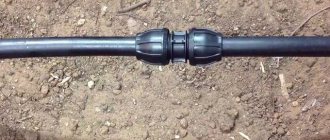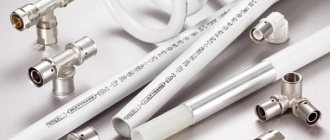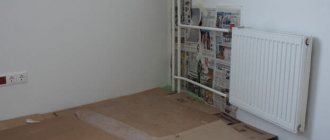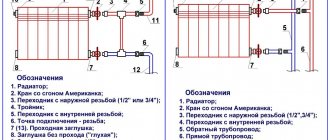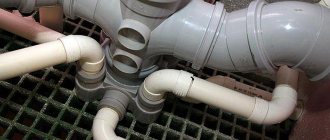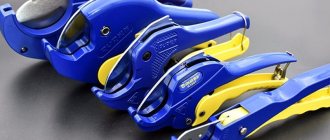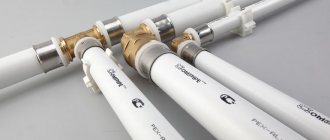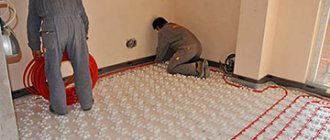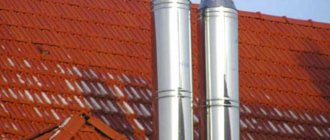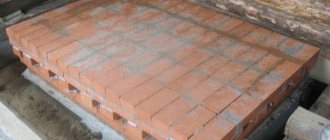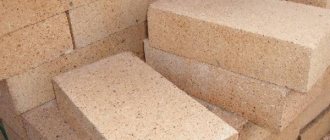Advantages
The popularity that compression fittings have gained is largely determined by their technical characteristics:
- Installation does not require the use of complex welding equipment or qualified welders.
- You can connect sections of the pipeline or plug a dead-end branch with your own hands, using new connecting parts made from polymers.
- No special skills are required to install compression press fittings.
- The use of compression fittings made it possible to reduce the labor intensity of installation of the entire pipeline system and the time spent on these operations.
- Compression press fittings made it possible to install combined networks using metal-plastic, steel, polypropylene, plastic and pipes made of other materials.
- Compression fittings increase the maintainability of systems. They allow the connection to be quickly disassembled for maintenance or relocation to another location.
Types of connecting parts
Crimped press fittings, for all their popularity, are not the only type of such connecting elements. Other types can be used to connect metal-plastic pipes:
- Detachable. This variety includes collet and threaded models. Threaded ones, in turn, are also divided into several groups, depending on the type of thread and the method of cutting it.
- Compression. This variety refers to conditionally detachable connecting parts.
- Press fittings. They are completely one-piece structures.
Threaded and collet structures can ensure complete maintainability of any pipeline system. They can be disassembled and assembled any number of times, undocked and docked with other elements of the system. Threaded elements are not widely used in household utilities due to their rather high cost.
Preparation stage
Metal-plastic pipes are interconnected and connected to plumbing fixtures using adapters, tees, elbows and other elements - fittings. They come in two types:
- collapsible (compression);
- press
The difference between them is in cost and connection technology, which will be discussed below. At the stage of purchasing connecting elements, you need to take into account some points in order to make the right choice. If the system is small and is being installed within one room, then you can safely take dismountable fittings and get to work.
When you need to assemble a heating system in a two- or three-story building, you will spend a lot of time connecting metal-plastic pipes with compression fittings, and it will cost more money. It’s easier to buy a set of press connectors and then find crimping pliers to install them; it will be much faster and cheaper.
The next step is preparing the tool. Regardless of the type of connection, you will need the following set:
- cutting knife;
- spring for pipe bending;
- calibrator;
- sandpaper.
For working with metal-plastic pipes, there is a special knife on sale that allows you to cut accurately at an angle of 90º and leave a minimum of burrs. However, you can also use a simple sharp knife. The calibrator is a cross made of plastic or metal with ends of different sizes for different pipe diameters. A plastic tool and a bending spring cost a penny, although some craftsmen use different devices instead.
To work with press fittings, the installation tool must include crimping pliers. Their purchase makes sense when the amount of work is large enough; in other cases, it is easier to borrow this tool from someone else. Collapsible connectors are twisted with open-end wrenches of appropriate sizes.
Before you begin installation, you must prepare the necessary tools and accessories. Everything will depend on the method of connecting the pipes you choose.
Sectional view of various fittings
There are two main ways to perform docking:
- using compression fittings;
- using press fittings.
The first option is faster and does not require the use of a special tool. If installation is carried out using press fittings, then it is necessary to purchase or rent a special device - press pliers.
So, if you chose the first fitting option, then you will need the following:
- to cut pipes you need to prepare special scissors or a hacksaw;
- set of wrenches;
- fine-grained sanding paper;
- a special tool for giving pipes the correct round shape (reamer or calibration);
- metal-plastic pipes themselves.
If you decide to use press fittings, then you should buy (or rent, cheaper) press pliers for this set. Such a tool can be either automatic or manual.
If the choice fell on metal-plastic pipes for installing a water supply system, then it is necessary to determine the amount of material that will be required for the work.
This type of material is supplied in coils from 50 to 200 m long, but you can purchase any number of linear meters of metal-plastic pipes in the store. The length of the internal water supply system is measured from the riser.
Installation is carried out along the walls, slightly above the floor level, so you need to measure the distance along the length of the wall from the riser to the intended installation location of the farthest crane in your room.
Then to the resulting value, add the height from the floor to the mounting hole of taps, toilets and washing machines. As a result, you get the total length.
It’s worth noting right away that any pipe connection significantly increases costs and is also a critical location for the reliability of the system, so it is very important to correctly calculate the length of the entire system at the preparatory stage.
After the measurements are taken, the resulting value in meters should be rounded up to a whole number. Then you need to decide on the diameter.
Metal-plastic pipes have an outer diameter ranging from 16 to 63 mm. When installing a water supply system inside a living space, the best option is 20 mm. A 16 mm pipe is more suitable for installing a “warm floor” system, as well as for piping from the main line to taps and mixers.
If it is necessary to install a water supply to a private house from the water supply network, then the maximum diameter of this material is selected.
Read more: The best vacuum cleaners with an aqua filter, ranking of the TOP best models
Installation
Threaded fittings are installed according to the markings. All elements of the connecting structure are put on the pipe and tightened with a nut. Tighten the nut until it becomes difficult to do so, but avoid excessive force. Otherwise, the connection can be easily damaged, as they say, the thread can be stripped. If the threaded connectors are not tightened sufficiently, the system will not be sealed. To check the quality of the connection, it is imperative to check the system for integrity and leaks.
The appearance of a small leak during inspection only indicates that the fitting is not tightened enough. Fixing this problem is very simple - the threaded connections are slowly tightened using a wrench. Tightening is carried out with the system running until the leak stops.
However, it happens that even after re-tightening the leak is not eliminated. In this case, FUM tape or flax fiber is used. These materials are wound onto the threaded connection, after which the nut should be tightened. As a rule, if the thread is in good condition, the leak stops. Compression fittings are installed in almost the same way.
To ensure a monolithic, non-demountable structure made of metal-plastic pipes, press fittings are installed. To install them, you will need a crimping tool - a press machine. The device can be manual or hydraulic.
To solve everyday problems, using a hand crimping tool is quite sufficient. The result is a reliable, completely sealed connection with almost invisible joints.
How to choose pliers for metal-plastic pipes
When choosing a suitable model of pliers, pay attention to the following points:
Cost of ticks. A tool designed for manual use has always been cheaper than an electric or battery-powered option. At the same time, the quality of the connections will be no worse than when using the most sophisticated model. Nowadays, almost all press jaws are capable of working with small diameters, which characterize metal-plastic pipes.
If you have to crimp pipes of significant diameters, then inquire about the working range of the pliers. The pliers can work with smaller diameters due to the presence of replaceable attachments. It is recommended to buy pliers that come with sets of replaceable inserts. By doing so, you will expand the range of your work.
If you really like a particular model, but there are no replacement attachments included, then purchase them separately. Just make sure that they fit your press jaws. With a small difference in cost, a tool produced by well-known companies specializing in this will be much more durable and stronger. The following manufacturers of hand press tools have proven themselves to be excellent: REMS, Hydrosta, VALTEC, Rothenberger, FORA, Novopress.
You can select and buy press pliers for metal-plastic pipes by contacting the Eurotools store.
In our offices located in Krasnodar, Moscow and St. Petersburg, you can get professional advice and choose the right tool model. Our store's website, email and phone number are also at your service. A system of personal discounts, a wide selection of tools and affordable prices will leave you in no doubt about choosing a store.
Gifts for products in this section
Personal recommendations
All productsSelect storeDisplay:Sort by: PopularityRatingAscending priceDecreasing priceDisplay by: 204080productsUseful information
Press pliers are designed for crimping terminals and connecting wires. They allow you to quickly and efficiently lay wiring. Necessary for technical equipment of companies providing electrical installation services, energy departments at enterprises, public utilities, and private craftsmen.
Press fittings
To install a press fitting, the pipe is cut at the joint at a strictly 90-degree angle. There should be no deviations from the right angle; this may have a detrimental effect on the tightness and quality of the connection. The diameter of the pipe is checked with a gauge. To make adjustments, a small chamfer is removed from the end of the pipe. In general, up to this stage, permanent connections are installed in almost the same way as threaded ones. Then the differences begin.
A steel sleeve and a fitting part of the connecting structure are installed at the end of the pipe. The sleeve is captured by the press of the crimping tool. The handles of the tool are brought together until they stop. All crimping tools work on the same principle - until the crimping process is completed, the handles do not separate.
Due to the formation of a completely sealed structure, press fittings can be used for hidden installation of metal-plastic pipes. They have found their application in the installation of utilities in residential buildings, when the pipeline is laid directly into a concrete screed or into a wall. They are indispensable for creating “warm floor” systems. In addition to the reliability of the connection, crimping elements allow you to reduce the consumption of pipes and fittings, thus reducing the overall costs of installing communications.
Scope of application
Metal-plastic communications at press joints are used in any of the possible household pipelines:
- when installing water pipelines, including hot water;
- when installing a heating system with a working pressure of up to 10 atm;
- when installing heated floors;
- for hidden installation of electrical wires;
- when moving from one pipeline to another;
- when connecting pipes of different diameters.
On an industrial scale, metal-plastic pipes are used:
- for transporting liquids (food, in the chemical industry) with a working pressure of no more than 10 atm;
- for transportation of gases, including compressed air;
- to protect the power cable.
We recommend that you familiarize yourself with: Functions of a three-way valve for a pressure measuring device (pressure gauge)
Limitations in the use of metal-plastic pipes include the need to dismantle communications in the future. For example, to change the configuration or add additional wiring.
Crimping rules
Despite the ease of installation of compression fittings, there are several subtleties that must be taken into account during operation. Press jaws have a set of inserts of different sizes. The crimping insert is selected according to the caliber (diameter) of the pipe. Provided that the positioner insert is selected correctly, after crimping, two identical annular strips are obtained. An insert that does not match the pipe caliber will not allow proper compression, as a result of which the joint will be leaky.
The coupling can only be crimped once. Repeated compression is prohibited. If during work the fitting was installed incorrectly, it will have to be completely dismantled and a new one installed.
The design of crimp connectors may vary slightly between different manufacturers. The main difference is the installation of the ferrule. In some models it is initially fixed to the fitting. Installation of such components is carried out in a slightly different sequence, since there is no need to install the sleeve on the end of the pipe. Immediately after calibration, the pipe is placed on the fitting and the compression process is carried out.
Classification of fittings
Types of compression fittings.
- corners and bends (used when connecting turns from 45 degrees);
- crosses (help to branch on two sides);
- tees (used for one-way branches);
- plugs (used for fastening at the end of a pipe);
- couplings (with the help of them pipes of the same diameter and direction are connected);
- fittings (if necessary, connection to a hose).
Fittings that are used to connect pipes of the same diameter are called straight, and those intended for fastening pipes of different diameters are called transitional.
There is a wide range of cast iron, steel, brass or copper connecting elements on the construction market.
As for cast iron, they are distinguished by such qualities as strength and durability. Cast iron fittings have a significant advantage over other connecting products, such as a steel coupling. Other positive qualities of cast iron elements include high resistance to negative environmental influences and versatility.
Modern industry today cannot do without steel fittings. More recently, it was possible to bypass obstacles in the pipeline path by bending the pipe. Today this is not necessary. A pipeline using steel products is easy to assemble and disassemble, which is also important.
